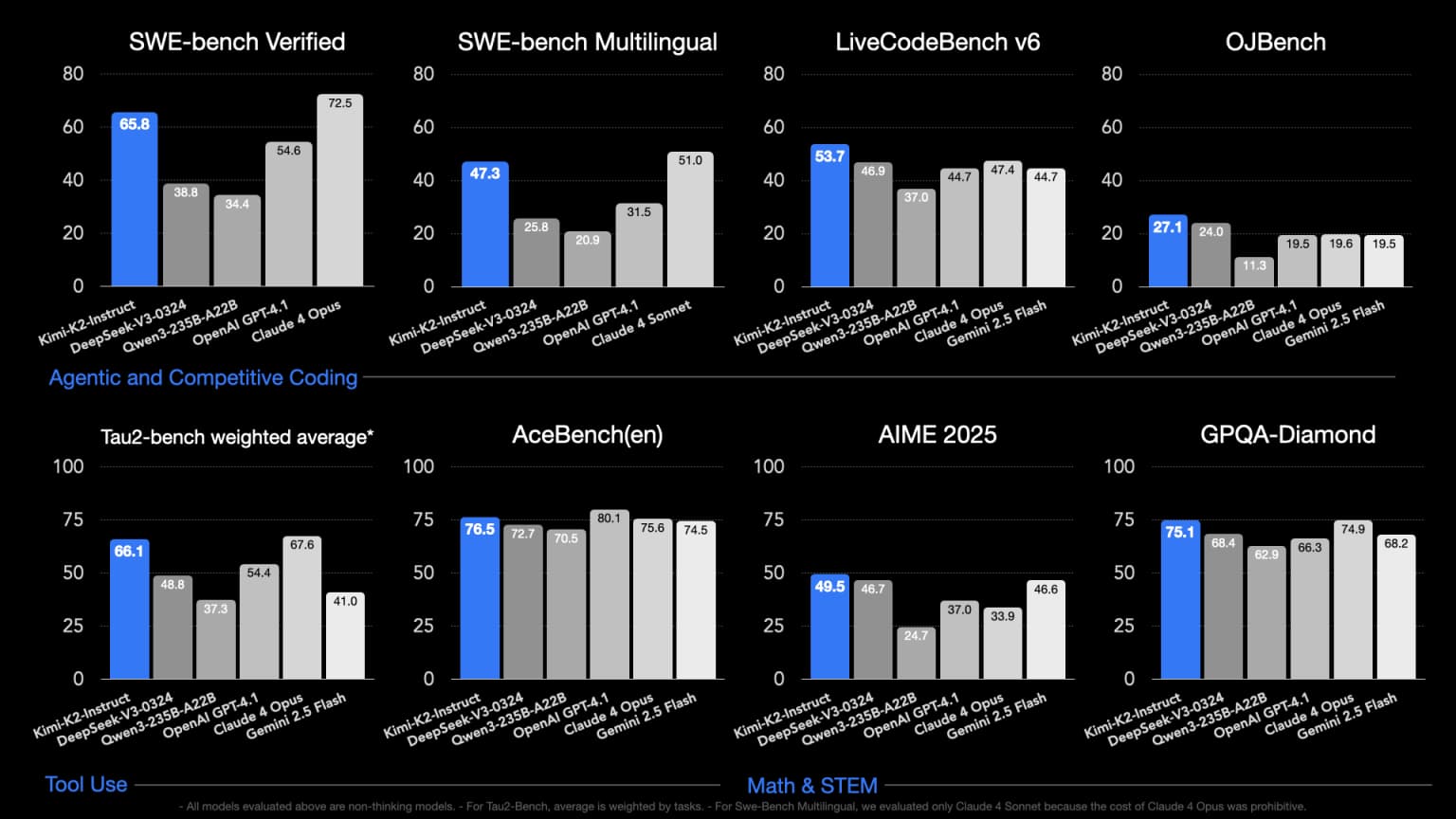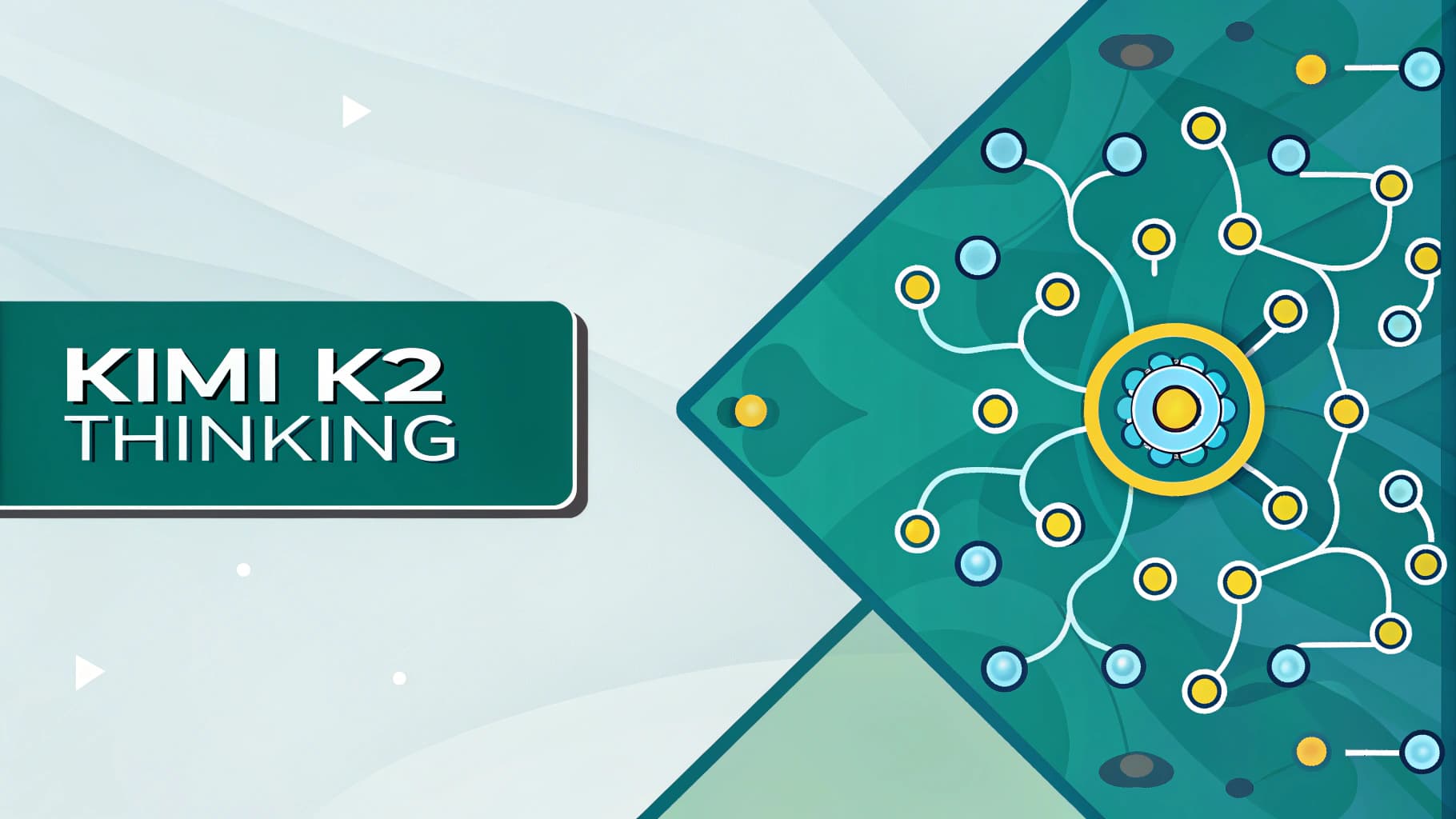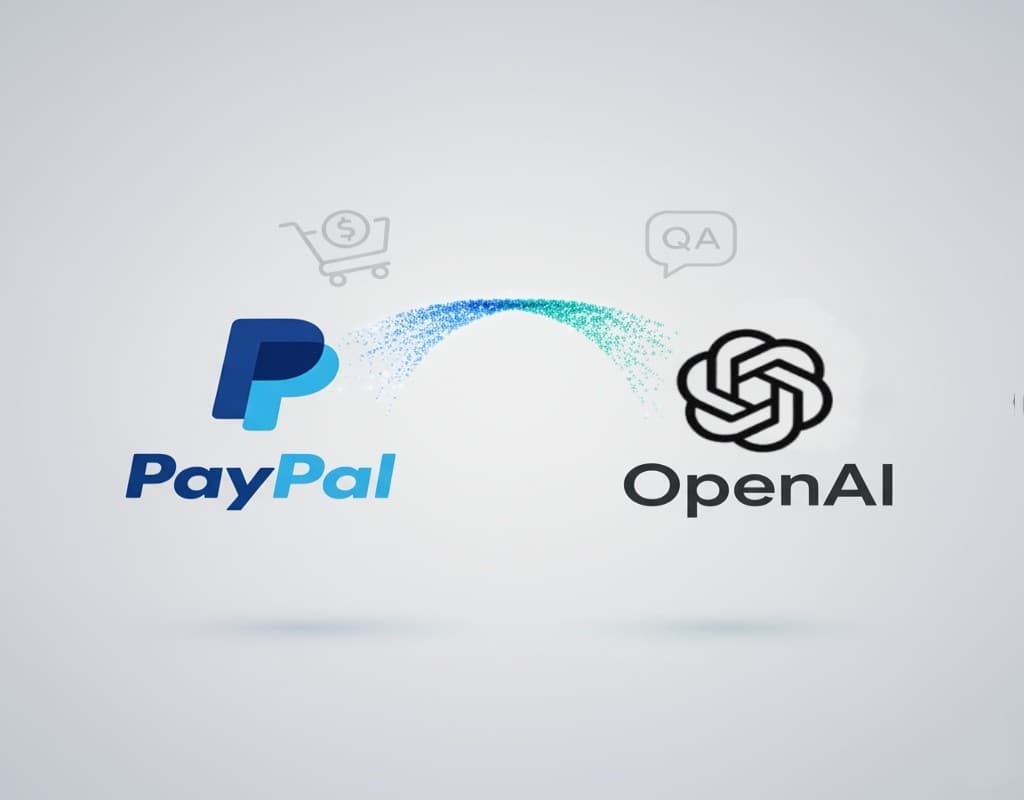
Kimi K2: The Free Chinese Rival Outperforming GPT-4 in Coding
Chinese startup Moonshot AI has unveiled its new open-source model, “Kimi K2.”
The announcement represents a direct challenge to the closed systems developed by major players like OpenAI and Anthropic, particularly given the model’s strong performance in coding and agentic tasks.
Moonshot has clarified that the new model moves beyond simply answering queries and into the realm of taking action.
Kimi K2 was specifically designed to support “agentic” capabilities-the ability to use external tools, write and execute code, and independently complete complex, multi-step tasks without direct human intervention.
A Performance that Demands Attention
On the performance front, the numbers tell a story that Silicon Valley executives should take note of.
In benchmark tests published on the model’s page, Kimi K2 has shown results that, in some cases, surpass its competitors.
For instance, on the LiveCodeBench-one of the most realistic benchmarks for testing coding abilities-the model achieved an accuracy of 53.7%, exceeding well-known models like GPT-4.1.

The impressive results don’t stop at coding. In mathematics tests like MATH-500, the model scored a 97.4% success rate, suggesting that Moonshot AI may have found effective solutions for mathematical reasoning, a challenge for many rivals.
The Secret to Kimi K2’s Success
The key to this superior performance lies in the model’s architecture. Kimi K2 is based on a Mixture of Experts (MoE) framework with one trillion parameters, activating 32 billion of them for each inference.
This structure allows the model to be divided into specialized sub-networks, a design that significantly reduces computational costs and achieves faster performance.
In a related development, the company revealed a new optimization tool it calls “MuonClip.”
According to the company, the tool successfully maintained stability during the massive model’s training process without any issues-an engineering feat that could change the economics of training large language models.
Free Access to Kimi K2
Moonshot AI offers its new Kimi K2 model for free to users on the web and mobile via kimi.com.
Developers can also integrate it into their applications through a compatible API or run it on their own servers.
Looking ahead, the company plans to enhance the model’s capabilities by adding features like visual understanding and advanced reasoning.
However, it has acknowledged some current challenges, confirming that the model’s performance can degrade on certain tasks when tool use is enabled. Work is underway to address these issues in future releases.
A Smart Strategy to Shift the Balance
Moonshot AI has released its model in two versions: “Kimi-K2-Base,” aimed at researchers and developers who want to build custom solutions, and “Kimi-K2-Instruct,” which is optimized for general conversation and agentic tasks.
But the boldest move lies in its pricing and distribution strategy. The company decided to make the model open source while simultaneously offering an API at highly competitive prices-about five times cheaper than using rival models like Claude 3 Sonnet.
This dual strategy puts competitors in a difficult position.
By going open source, Moonshot is fostering a global community of developers to help improve the model, creating a competitive moat that is difficult for closed-source companies to match.
At the same time, the low price point attracts companies and institutions looking for cost-effective AI solutions.
The move is part of a broader trend among Chinese companies like DeepSeek and Alibaba, which are embracing open source as a way to showcase their technical capabilities and expand their global influence in the heated AI race.
Ultimately, the launch of Kimi K2 is more than just another addition to the list of available models.
It is a clear indicator of a significant turning point, where superior AI capabilities are no longer the exclusive domain of a few major corporations, and innovations from Asia are now able to compete forcefully on the world stage.




